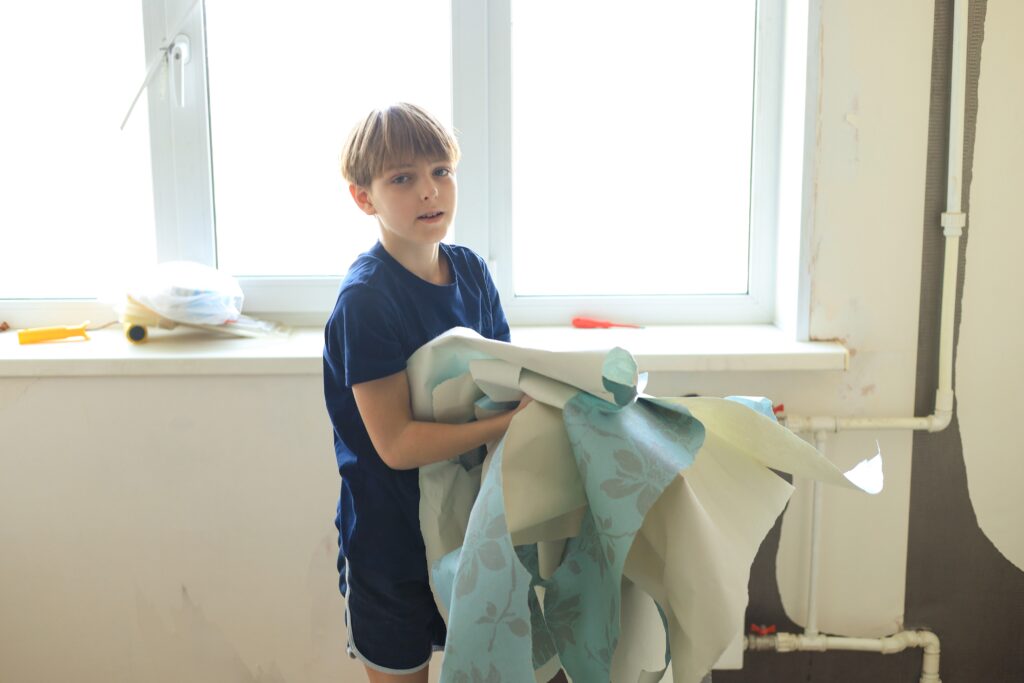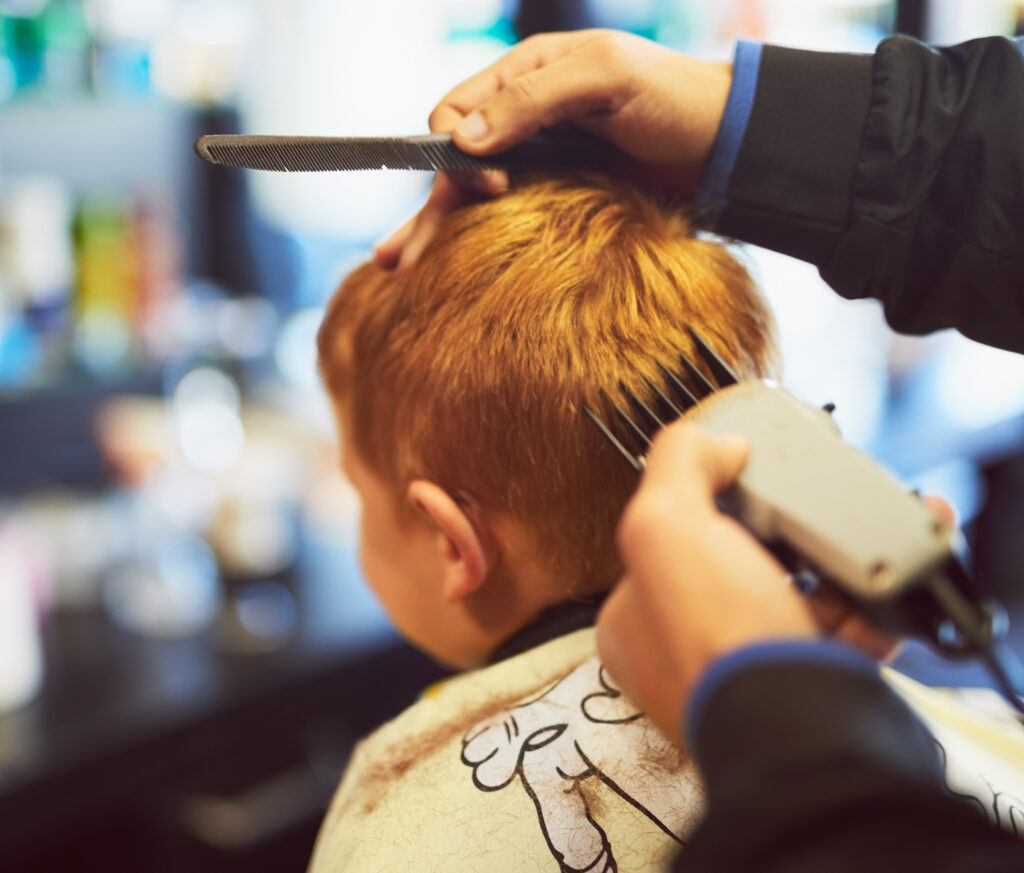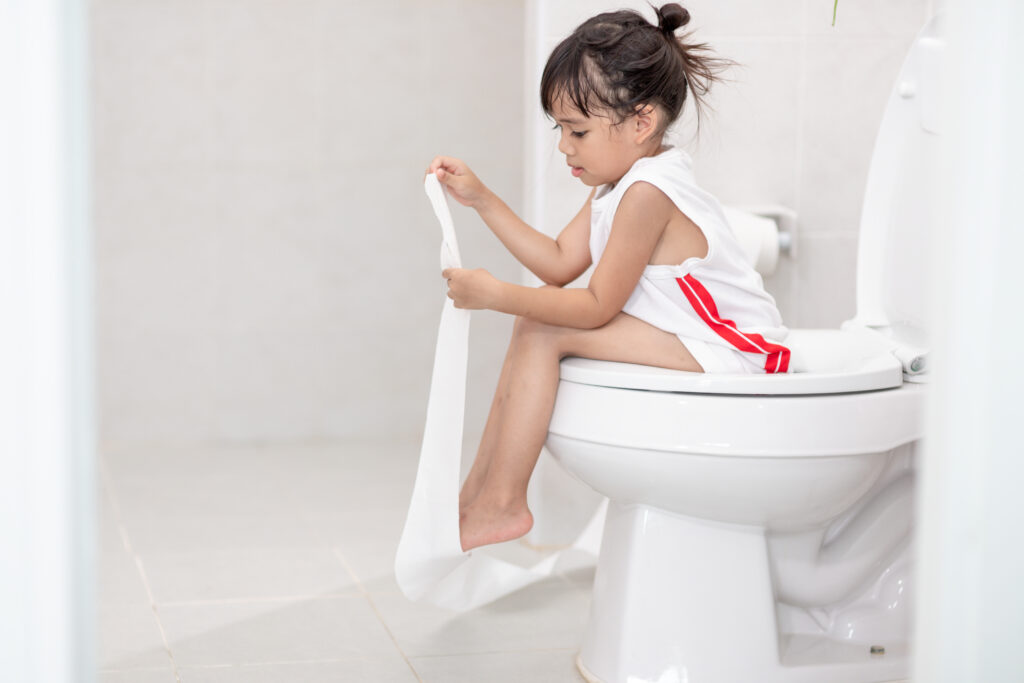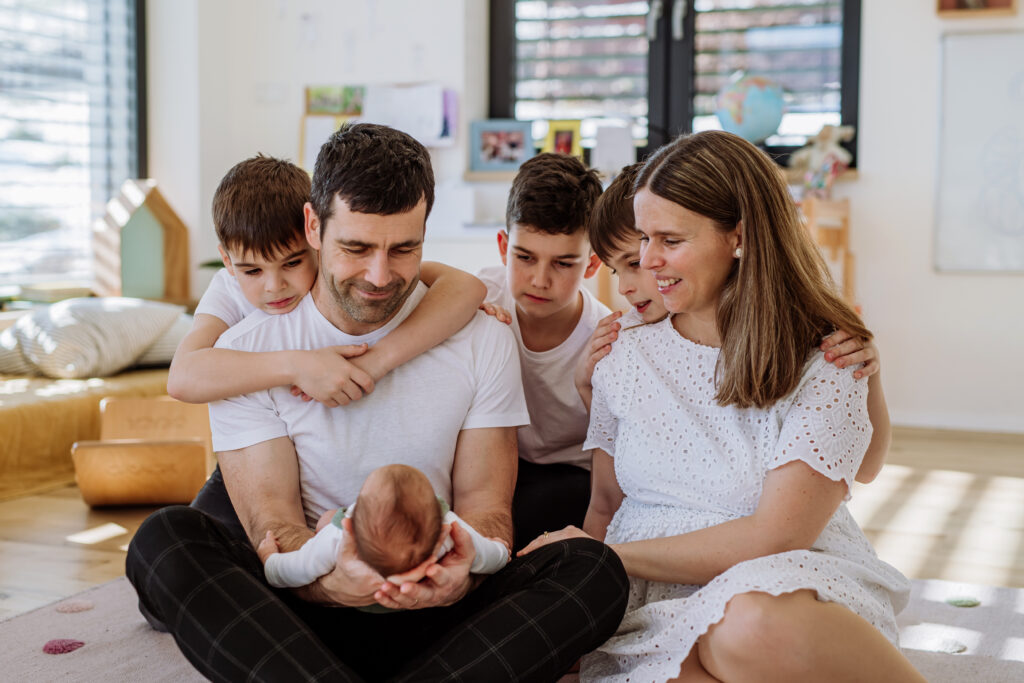Organization: Helping Kids Tidy Up Their Spaces

Teaching children to stay organized is one of the most valuable life skills you can impart. By helping them organize their backpacks, toys, and closets early on, you’re setting them up for a lifetime of responsibility and efficiency. These organizational habits not only make life easier but also contribute to family well-being by reducing stress and fostering a calm, orderly environment. Here’s how you can make organization fun and practical for your little ones. Why Organization Matters An organized space helps children feel more in control of their environment, boosting their confidence and ability to focus. It also makes daily routines smoother, whether it’s getting ready for school or finding their favorite toy. According to child development specialists, engaging children in organizational tasks fosters independence, decision-making skills, and self-discipline. Backpack Organization A cluttered backpack can turn into a daily struggle for both kids and parents. Here are some simple tips to help your child stay on top of their school supplies: 1. Create a Weekly Clean-Out Routine Set aside time each week to clean out old papers, snack wrappers, and unnecessary items. Use this opportunity as a moment of parent-child bonding and to teach them how to prioritize what to keep. 2. Use Color-Coded Supplies Encourage your child to use different-colored folders for each subject, making it easier to find assignments quickly. 3. Pack Smart Help them place heavier items, like textbooks, closer to their back and lighter items in the front compartments. This prevents back strain and keeps everything balanced. 4. Add a Checklist Tape a small checklist inside their backpack as a reminder of what they need to pack daily, such as lunch, homework, and sports gear. Toy Storage Solutions Toy clutter can overwhelm a space in no time, but with a little creativity, you can keep things tidy and accessible: 1. Categorize and Label Sort toys into categories like building blocks, dolls, or puzzles. Use clear bins with labels or pictures, so even toddlers can understand where things go. This is a great activity to include as part of activities for toddlers to teach sorting skills. 2. Rotate Toys To keep things fresh, store half of the toys in a separate area and rotate them every few weeks. This reduces clutter and increases excitement when they see “new” toys. 3. Designate a Cleanup Zone Create a small area where kids can gather toys before putting them away. This adds structure to cleanup time and makes the task less daunting. 4. Use Multi-Functional Furniture Storage benches or toy chests that double as seating are perfect for small spaces, keeping toys hidden while maximizing functionality. Closet Design for Little Kids A well-organized closet can make mornings stress-free and help kids feel more independent. 1. Lower the Bar Install a lower clothing rod or hooks so your child can easily reach their clothes. This empowers them to pick out their outfits. 2. Use Dividers Divide clothes by type—shirts, pants, dresses—and use labeled bins for socks, shoes, and accessories. This helps them know exactly where things belong. 3. Seasonal Switch Keep only the current season’s clothing within reach. Store off-season items in bins or higher shelves to minimize clutter. 4. Add a Daily Outfit Organizer Use a hanging organizer with compartments for each day of the week. Together, you can plan outfits during a family meeting or at the start of the week. Tips for Success Additional Resources For more ideas and strategies, explore child development classes online or consult the best parenting resources. Stay informed by visiting our press releases here, and don’t forget to follow us on Instagram and YouTube for more tips and tricks to empower your parenting journey. Final Thoughts: Creating Order, Building Confidence Teaching kids to organize their spaces is about more than tidying up—it’s about fostering independence, building confidence, and creating a calm environment where they can thrive. By starting with simple tasks like backpack organization, toy storage, and closet design, you’re equipping your child with lifelong skills that will serve them well in every aspect of life. So grab some bins, make a plan, and enjoy the process of creating order together. Each step you take is an investment in your child’s success and your family’s happiness.
Haircuts and Sensory Issues: A Guide to Stress-Free Grooming

For kids with Sensory Processing Disorder (SPD) or who are on the autism spectrum, getting a haircut can be an overwhelming experience. The unfamiliar sounds, textures, and environment of a salon can trigger anxiety, making what seems like a simple task a challenging ordeal. With the right strategies, tools, and support, you can make haircuts a more comfortable experience for your child. This blog explores tips to help children navigate haircuts, reviews sensory-friendly hair clippers, and offers guidance on finding salons with trained professionals who cater to kids with sensory sensitivities. Tips to Help Kids with SPD Through a Haircut 1. Prepare Them Ahead of Time Talk to your child about the haircut experience in advance. Use social stories, pictures, or videos to show them what to expect. Role-playing with dolls or stuffed animals can also help familiarize them with the process. 2. Create a Predictable Routine Children with SPD often feel more comfortable when they know what’s coming. Establish a consistent routine for haircuts, including scheduling them at the same time of day and at a familiar place. 3. Use Visual or Verbal Cues Guide your child through the process with clear, step-by-step instructions. For younger kids, activities for toddlers like drawing a picture of the haircut process can make it less intimidating. 4. Involve Them in Decision-Making Let your child choose their hairstyle or pick the tools (e.g., clippers or scissors) they prefer. This empowers them and helps reduce anxiety. 5. Sensory Tools and Comfort Items Bring along items that provide comfort, like noise-canceling headphones, a weighted lap pad, or a favorite toy. Consider playing calming music or white noise to create a soothing environment. 6. Break It Down If a full haircut feels overwhelming, consider breaking it into smaller steps, such as trimming a little each day. Celebrate each accomplishment to build their confidence. 7. Practice Mindful Parenting Stay calm and patient throughout the process. Your demeanor will set the tone and help your child feel safe. Sensory-Friendly Hair Clippers: Product Reviews Choosing the right tools can make haircuts easier at home. Here are three sensory-friendly hair clippers that are quiet, lightweight, and designed with kids in mind: 1. Wahl Easy Cut Cordless Clipper 2. Philips Norelco Kids Hair Clipper 3. Calming Clipper Finding Sensory-Friendly Hair Salons Many hair salons now offer services tailored to children with sensory sensitivities or on the autism spectrum. These salons often employ stylists trained to create a calm and accommodating environment. How to Find Sensory-Friendly Salons Additional Support and Resources For more tips and resources on supporting children with sensory issues, explore child development classes online or browse the best parenting resources. Stay updated with our press releases here, and don’t forget to follow us on Instagram and YouTube for practical advice and tools to empower your parenting journey. Final Thoughts: Transforming Haircuts into Positive Experiences Helping your child through haircuts isn’t just about grooming—it’s about building trust, fostering parent-child bonding, and showing them that their needs are understood and respected. With patience, preparation, and the right tools, you can turn haircuts into manageable, even enjoyable, experiences. Remember, every child is different, and what works for one may not work for another. Stay flexible, celebrate small victories, and know that your efforts are making a difference. Together, you and your child can navigate this journey with confidence and connection.For kids with Sensory Processing Disorder (SPD) or who are on the autism spectrum, getting a haircut can be an overwhelming experience. The unfamiliar sounds, textures, and environment of a salon can trigger anxiety, making what seems like a simple task a challenging ordeal. With the right strategies, tools, and support, you can make haircuts a more comfortable experience for your child. This blog explores tips to help children navigate haircuts, reviews sensory-friendly hair clippers, and offers guidance on finding salons with trained professionals who cater to kids with sensory sensitivities. Tips to Help Kids with SPD Through a Haircut 1. Prepare Them Ahead of Time Talk to your child about the haircut experience in advance. Use social stories, pictures, or videos to show them what to expect. Role-playing with dolls or stuffed animals can also help familiarize them with the process. 2. Create a Predictable Routine Children with SPD often feel more comfortable when they know what’s coming. Establish a consistent routine for haircuts, including scheduling them at the same time of day and at a familiar place. 3. Use Visual or Verbal Cues Guide your child through the process with clear, step-by-step instructions. For younger kids, activities for toddlers like drawing a picture of the haircut process can make it less intimidating. 4. Involve Them in Decision-Making Let your child choose their hairstyle or pick the tools (e.g., clippers or scissors) they prefer. This empowers them and helps reduce anxiety. 5. Sensory Tools and Comfort Items Bring along items that provide comfort, like noise-canceling headphones, a weighted lap pad, or a favorite toy. Consider playing calming music or white noise to create a soothing environment. 6. Break It Down If a full haircut feels overwhelming, consider breaking it into smaller steps, such as trimming a little each day. Celebrate each accomplishment to build their confidence. 7. Practice Mindful Parenting Stay calm and patient throughout the process. Your demeanor will set the tone and help your child feel safe. Sensory-Friendly Hair Clippers: Product Reviews Choosing the right tools can make haircuts easier at home. Here are three sensory-friendly hair clippers that are quiet, lightweight, and designed with kids in mind: 1. Wahl Easy Cut Cordless Clipper 2. Philips Norelco Kids Hair Clipper 3. Calming Clipper Finding Sensory-Friendly Hair Salons Many hair salons now offer services tailored to children with sensory sensitivities or on the autism spectrum. These salons often employ stylists trained to create a calm and accommodating environment. How to Find Sensory-Friendly Salons Additional Support and Resources For more tips and resources on supporting children with sensory issues, explore child development classes online or browse the best parenting resources. Stay
Family Traditions: Building Bonds and Shaping Futures

Family traditions are more than just cherished memories—they’re a cornerstone of identity, connection, and emotional well-being. Whether it’s a special holiday celebration, a quirky birthday ritual, or a simple weekly routine, traditions help create a sense of belonging and security for children. These shared experiences foster parent-child bonding while also playing a vital role in shaping a child’s cognitive and emotional development. Let’s explore the value of family traditions, their impact on children’s brains, and how to establish meaningful rituals for holidays, birthdays, and everyday life. Why Family Traditions Matter Family traditions create a sense of continuity and connection. They provide children with a stable foundation in an ever-changing world, reinforcing the values and relationships that define their family. Traditions contribute to family well-being, building trust and fostering positive interactions between family members. On a neurological level, traditions stimulate the brain by reinforcing patterns and emotional connections. Celebrating milestones, engaging in rituals, or repeating familiar activities activates the reward centers of the brain, creating lasting memories. According to child development specialists, these experiences also enhance social skills, emotional intelligence, and self-esteem. Establishing New Traditions Creating family traditions doesn’t have to be elaborate or expensive. The most meaningful rituals are often simple and personal, reflecting your family’s values and interests. Holiday Traditions Birthday Traditions The Value of Legacy in Family Traditions Traditions often reflect a family’s history and cultural identity, linking generations through shared practices. They create a sense of legacy, helping children understand where they come from and what their family stands for. This connection to the past enriches their sense of self and fosters resilience. Holding a family meeting to discuss and design traditions allows everyone to contribute, ensuring that the rituals resonate with all members. These meetings also teach children the value of collaboration and active participation. The Role of Traditions in Child Development Traditions contribute significantly to a child’s growth and learning: Tips for Creating Lasting Traditions Additional Resources for Parenting Support For more tips on building family traditions and fostering mindful parenting, explore child development classes online or consult the best parenting resources available. Stay updated by visiting our press releases here, and follow us on Instagram and YouTube for ideas and inspiration. Final Thoughts: The Gift of Tradition Family traditions are a powerful way to nurture connection, teach values, and create a legacy of love and support. Whether it’s a holiday tradition that spans generations or a new ritual you create with your children, these shared moments become the fabric of your family story. So, gather your loved ones, start small, and watch as these traditions blossom into cherished memories that enrich your family’s bond for years to come. After all, the greatest gift we can give our children is the sense of belonging and joy that traditions bring.
Traveling with Kids: Pro Tips for a Smooth and Memorable Journey

Traveling with kids can feel like an adventure in itself—equal parts exciting and daunting. Whether you’re preparing for their first flight, embarking on a cruise, or planning a road trip, a little preparation goes a long way in ensuring the journey is enjoyable for everyone. Here are some practical tips to help you navigate traveling with kids, from packing smart to keeping them entertained without screens. Preparing Kids for Their First Flight Flying for the first time can be an overwhelming experience for kids. Here’s how to prepare them: Cruising with Kids: Smooth Sailing Tips Cruising can be an amazing family experience, offering a mix of adventure and relaxation. However, traveling on a ship comes with unique challenges. Travel Kits for Kids (Without Screens!) Screens can be lifesavers during long trips, but it’s good to have non-digital options that encourage creativity and engagement. Here are some ideas for screen-free travel kits: The Role of Conscious Parenting While Traveling Traveling is the perfect opportunity to practice mindful parenting. Stay present during the journey, focusing on shared experiences rather than stressing over perfection. Use the travel time to bond and strengthen your relationship with your child. Parent-child bonding happens naturally when you share in their excitement and wonder, whether it’s spotting the first cloud from the plane window or exploring new cultures together. For parents sharing responsibilities, conscious co-parenting is essential. Collaborate to divide tasks like packing, navigating, and keeping the kids entertained. This ensures a smoother trip and sets an example of teamwork for your children. Tips for Stress-Free Travel Stay Connected for More Tips For additional parenting tips, travel ideas, and expert advice, follow us on Instagram and YouTube. We share resources designed to empower your parenting journey and make family adventures unforgettable. To stay informed on family travel trends, check out our press releases here for the latest updates. Final Thoughts: Embrace the Adventure Traveling with kids is less about perfection and more about creating memories together. With preparation, flexibility, and a little creativity, family trips can be a source of joy and connection. Whether it’s your child’s first flight or a family cruise, these shared experiences will strengthen your bond and leave you with stories to cherish for a lifetime. So pack your bags, embrace the adventure, and remember: even the challenges become part of the journey. Happy travels!
School Choice: Finding the Best Fit for Your Child

Choosing the right educational path for your child is one of the most significant decisions you’ll make as a parent. Whether you’re considering homeschooling, public school, or private school, each option comes with its own benefits and challenges. The key is finding the choice that aligns with your child’s needs, your family’s values, and your long-term goals. Here’s a guide to help you make an informed decision, with considerations for each school type and practical tips for navigating this important choice. Homeschooling: A Personalized Learning Experience Homeschooling offers a tailored approach to education, allowing parents to design a curriculum that suits their child’s unique learning style and pace. This option is particularly appealing for families who want to prioritize mindful parenting, as it provides opportunities to integrate activities for toddlers and older children into daily learning. Pros: Cons: If homeschooling appeals to you, consider consulting a child development specialist to ensure your curriculum supports your child’s developmental milestones. Public School: A Structured and Social Environment Public schools are a popular choice for many families due to accessibility and the opportunity for children to interact with peers in a structured environment. Schools often have established resources, extracurricular activities, and trained educators who support various learning needs. Pros: Cons: Parents practicing conscious parenting can stay involved by attending school events, communicating with teachers, and creating a supportive home environment for learning. Private School: Specialized and Value-Aligned Education Private schools offer smaller class sizes, specialized programs, and often align with specific educational philosophies or religious values. They can be an excellent choice for families seeking a focused approach to their child’s education. Pros: Cons: Before committing, visit the school, meet the teachers, and attend open houses to ensure the environment aligns with your family’s expectations and your child’s personality. Factors to Consider When Choosing a School When evaluating school options, it’s essential to consider both your child’s needs and your family’s circumstances. Here are a few factors to keep in mind: Consider holding a family meeting to discuss these factors together, allowing older children to share their thoughts. This collaborative approach fosters family well-being and ensures everyone feels involved in the decision. Supporting Your Choice with Resources Whichever path you choose, supplementing your child’s education with child development classes online or exploring the best parenting resources can help fill any gaps and enhance their learning experience. These tools provide parents with valuable insights and strategies for supporting their child’s growth. For updates on educational trends and insights, check out our press releases here to stay informed about the latest in child development and schooling options. Final Thoughts: Choosing with Confidence Choosing a school is a deeply personal decision, and there’s no one-size-fits-all answer. By understanding your child’s needs, exploring your options, and staying involved in their education, you can create a supportive and enriching environment for their development. For more tips and guidance on parenting and education, follow us on Instagram and YouTube. We share valuable insights, resources, and tools to empower your parenting journey and help you make confident decisions for your child’s future. Remember, the ultimate goal is to provide an environment where your child feels supported, challenged, and inspired to grow. Trust your instincts, stay flexible, and know that your thoughtful choice will set the foundation for your child’s success and happiness.
Potty Training: Navigating the Journey with Patience and Positivity

Potty training is a milestone every parent looks forward to, but it’s also one that comes with its share of challenges. It’s easy to worry about timelines or feel frustrated when progress is slow, but here’s the good news: your child won’t go to college in a pull-up. Each child has their unique timeline, and with the right approach, you can make this process a positive experience for the entire family. Let’s explore popular potty training methods, how to stay patient, and how to make the journey as smooth as possible. Why Potty Training Matters Beyond the practical benefits of ditching diapers, potty training plays a significant role in a child’s development. It’s an opportunity to teach independence, responsibility, and self-awareness. For parents, it’s also a moment to practice mindful parenting, where you stay present and attuned to your child’s needs and emotions. Potty training can also enhance parent-child bonding as you work together toward a shared goal. With patience and a bit of creativity, this process can become an empowering experience for your child. The 3-Day Potty Training Method: A Quick Transition The 3-day method is a popular approach for parents looking to make a quick transition from diapers to potty. It involves dedicating three days to intensive potty training, where your child goes diaper-free and is encouraged to use the potty consistently. Benefits of the 3-Day Method: Tips for Success: The Benefits of Pull-Ups For families who prefer a gradual approach, pull-ups can be an excellent tool. They provide a middle ground between diapers and underwear, helping your child transition at their own pace. Benefits of Pull-Ups: Pull-ups can be particularly helpful during the early stages of potty training or as part of a conscious co-parenting strategy, ensuring consistency between caregivers. The Power of the Reward System Rewards can be a fun and effective way to motivate your child during potty training. The key is to make rewards immediate and achievable to reinforce positive behavior. Reward Ideas: Using rewards ties into family well-being by creating a positive atmosphere around potty training, making it a less stressful experience for both you and your child. Staying Positive Throughout the Process Potty training is a journey, not a race. Here’s how to stay positive even when it feels challenging: Additional Resources for Support Potty training doesn’t have to be overwhelming. There are plenty of resources available to guide you through the process. Explore child development classes online or check out the best parenting resources to gain tips and techniques from experts. For updates and insights, visit our press releases here, and follow us on Instagram and YouTube for ongoing tips, tools, and advice to empower your parenting journey. Final Thoughts: Trust the Process Potty training is a significant milestone, but it’s also just one of many steps in your child’s growth. By staying patient, supportive, and positive, you’re not only teaching them a skill—they’re also learning resilience, independence, and trust in your guidance. Whether you opt for the 3-day method, pull-ups, or a blend of both, remember that every child progresses at their own pace. Embrace the journey, celebrate the milestones, and know that with love and encouragement, you’re setting your child up for success—both in potty training and beyond. Happy training!
Guiding the Way: Understanding Lighthouse Parenting

Parenting is often described as one of life’s greatest journeys, and like any journey, it’s easier with a guiding light. That’s where lighthouse parenting comes in. This balanced approach emphasizes guiding children through life with care and attention, like a lighthouse providing direction to ships in the storm. It’s about being a steady, supportive presence while allowing your children to navigate their own paths. Lighthouse parenting blends the principles of conscious parenting with practical strategies for fostering independence, emotional resilience, and a sense of security. Let’s dive deeper into this approach and explore how it can transform your parenting journey. What is Lighthouse Parenting? Lighthouse parenting is a term coined by Dr. Kenneth Ginsburg, a pediatrician and child development expert. It’s based on the idea that parents should act as beacons of light—guiding their children safely through challenges while letting them explore and grow. This approach strikes a balance between being involved and giving children the space they need to learn from their experiences. Lighthouse parents provide structure, set boundaries, and instill values while encouraging independence and critical thinking. Key Principles of Lighthouse Parenting How to Practice Lighthouse Parenting 1. Set Clear Boundaries Children thrive with structure, but they also need flexibility to explore. Establish rules that are firm yet reasonable, and explain the reasons behind them. For example, holding a family meeting to discuss house rules ensures that children feel involved and understand the expectations. 2. Encourage Independence Give your child opportunities to make decisions appropriate for their age. Whether it’s letting toddlers choose their outfits or allowing older kids to plan their schedules, these experiences build self-reliance and problem-solving skills. 3. Focus on Emotional Development Lighthouse parenting emphasizes emotional intelligence. Teach your child to identify and express their emotions in healthy ways. This approach aligns with practices taught in child development classes online and supported by child development specialists. 4. Balance Support and Freedom Be there when your child needs you, but resist the urge to solve every problem for them. Offering guidance while allowing them to face challenges on their own builds resilience and adaptability. The Benefits of Lighthouse Parenting Tips for Starting Your Lighthouse Parenting Journey Stay Informed and Empowered For more tips on parenting styles and strategies, check out our press releases here and follow us on Instagram and YouTube. We offer expert advice and real-life examples to empower your parenting journey. Final Thoughts: Lighting the Path for Your Child Lighthouse parenting is about finding the balance between providing guidance and allowing independence. By being a steady, supportive presence, you’re equipping your child with the tools they need to navigate life’s waters confidently. Embrace the journey, trust in your parenting instincts, and remember that your love and guidance are the most important beacons in your child’s life. Together, you’ll create a foundation of trust, resilience, and connection that will carry them through life’s challenges and triumphs.
Raising Boys: Nurturing Connection and Understanding

Raising boys can be a wonderfully unique journey. Boys often engage with the world in ways that are more physical than emotional, and understanding this dynamic can help parents foster meaningful connections that support their development. While every child is unique, research shows that boys tend to explore and learn differently from girls. By recognizing these traits and adopting a mindful approach, parents can support their boys in a way that helps them thrive. How Boys Learn and Play Boys are typically more physically active, exploring the world through touch, movement, and play. They’re often drawn to activities that challenge their strength, coordination, and problem-solving abilities. This physical engagement is not just an outlet for their energy; it’s also essential for their brain development. Studies show that physical play can enhance boys’ cognitive skills, emotional regulation, and social interactions. For instance, activities for toddlers that involve building, climbing, or solving puzzles can provide boys with the physical stimulation they need while also encouraging cognitive growth. Simple games like building blocks or playing catch can improve motor skills and teach problem-solving in a hands-on way. Embracing these tendencies can make learning enjoyable and productive, especially for young boys. Emphasizing Physical Connection and Play While boys may express themselves through physicality, this doesn’t mean they’re any less capable of emotional depth. They simply may require different ways to express their emotions. Often, boys connect deeply during active play or shared physical activities. If you’re aiming for parent-child bonding, consider incorporating activities that allow boys to express themselves while engaging physically, like playing sports, hiking, or even roughhousing (within safe boundaries). Active play creates a space for boys to communicate nonverbally, making it easier for them to open up emotionally over time. For example, taking a walk together or working on a project side-by-side allows for shared moments that build trust. Parents can use these moments to gently ask questions or check in, creating opportunities for connection without forcing direct conversation. Supporting Connection of Emotional Growth in Boys While physicality is essential for many boys, fostering emotional growth is equally important. Boys may not always express emotions as openly as girls, so helping them identify and understand their feelings is crucial. Mindful parenting can be a valuable approach here, as it encourages parents to observe their child’s emotional cues and respond with patience and empathy. Encourage boys to recognize and name their emotions. During a family meeting, for example, create a safe space for everyone to share their feelings, even if it’s just a few words. Boys often benefit from seeing emotions discussed openly and positively, which teaches them that it’s okay to feel and express their emotions. Using conscious parenting strategies like active listening and affirming their feelings can help boys understand that emotions are natural and important. This is especially impactful when practiced consistently, as it models a balanced approach to both physical and emotional engagement. Practical Tips for Raising Boys Nurturing Growth Through Connection Raising boys is about more than just managing their energy levels. It’s about recognizing their unique ways of connecting, learning, and growing. By fostering both physical engagement and emotional openness, parents can create an environment where boys feel secure, understood, and valued. If you’re interested in learning more about parenting strategies that support healthy, well-rounded development, follow us on Instagram and YouTube. We share tips, insights, and resources to help you navigate your parenting journey, building deeper bonds and a supportive family dynamic. Remember, every child is unique, and the journey of raising boys is filled with moments of discovery and growth. Celebrate these milestones, and know that each day brings new ways to connect, understand, and nurture the young men they’re becoming.
Raising Girls: Nurturing Emotional Connection and Growth

Raising girls comes with its own unique joys and challenges. Often, girls are wired for emotional connection before physical connection, making relationships, communication, and empathy key elements in their development. Understanding this can help parents create an environment that nurtures these strengths, while also fostering independence and resilience. By meeting their daughters’ emotional needs, parents can build a foundation of trust, love, and respect that lasts a lifetime. The Power of Emotional Connection From a young age, girls tend to be drawn toward emotional and social engagement. They’re often curious about relationships, keen observers of emotions, and naturally inclined toward empathy. This tendency doesn’t mean they won’t enjoy physical activities, but it does highlight the importance of parent-child bonding in their development. When parents prioritize connection, girls feel understood, valued, and secure, which supports their confidence and self-esteem. This emotional connection begins in simple ways, such as spending quality time together, engaging in deep conversations, and actively listening to their feelings. Mindful parenting can be particularly effective here, as it encourages parents to tune in to their child’s emotional world and respond thoughtfully, rather than reactively. Girls often benefit when parents model open communication and emotional awareness, teaching them that their feelings are valid and worth exploring. How Girls Learn and Engage Girls are typically more interested in activities that involve communication, storytelling, and creative play. For instance, activities for toddlers like role-playing, drawing, and reading aloud can be incredibly engaging for young girls, as they combine creativity with social interaction. Storytelling, in particular, helps girls develop language skills, empathy, and a better understanding of emotions. As girls grow, they often seek opportunities to connect and engage with others, whether through friendships, teamwork, or collaborative learning. Parents can support these tendencies by creating opportunities for social interaction and encouraging activities that emphasize teamwork and cooperation. This doesn’t mean girls won’t thrive in independent activities, but social and emotional engagement is often a key motivator in their learning process. Building Emotional Intelligence To support your daughter’s emotional growth, it’s essential to nurture her emotional intelligence. This means helping her recognize and manage her emotions, as well as understand the emotions of others. Activities that encourage self-reflection, such as journaling or drawing, can be great tools for girls to explore their feelings. Holding regular family meetings can also be a way to encourage emotional openness. These gatherings create a safe space for everyone to share their thoughts, address conflicts, and practice respectful listening. When girls see their parents valuing emotional expression, they learn that it’s okay to express vulnerability and ask for support. Practical Tips for Raising Girls Encouraging a Growth Mindset Girls may sometimes feel pressured to be perfect, which can lead to anxiety or self-doubt. To counter this, encourage a growth mindset by celebrating effort and resilience rather than perfection. Remind her that mistakes are part of learning and that growth comes from trying new things, even if she doesn’t succeed right away. This helps her develop a healthy self-image and the courage to take risks. Final Thoughts: A Journey of Connection and Empowerment Raising girls is a rewarding experience, filled with moments of deep connection and joy. By prioritizing emotional connection, supporting her independence, and nurturing her growth mindset, you’re helping her build a strong foundation for the future. Girls who feel valued, understood, and respected grow into women who are confident, empathetic, and resilient. If you’d like more tips on raising confident and emotionally intelligent daughters, follow us on Instagram and YouTube. We share insights, resources, and practical advice to support your parenting journey and foster healthy family dynamics. Remember, every moment spent connecting with your daughter is an investment in her future. By showing her love, understanding, and support, you’re not only raising a daughter—you’re nurturing a strong, compassionate individual who will carry these lessons forward for a lifetime.
Boosting Literacy Levels: Encouraging Young Readers at Home

One of the greatest gifts you can give your child is a love for reading. Reading not only expands vocabulary and comprehension skills but also fosters creativity, critical thinking, and empathy. As parents, you play a key role in helping your child develop strong literacy skills. But how exactly is literacy learned, and what can you do to encourage more reading at home? Let’s explore the journey of literacy and practical tips to support your young reader. How Literacy Is Learned Literacy is a process that begins long before children can read or write on their own. Babies and toddlers, for example, absorb language through listening and interacting with their parents and environment. This early exposure to words and sounds builds the foundation for future reading and writing. As children grow, they start to recognize letters, sounds, and words, a phase known as phonological awareness. They begin to associate letters with their corresponding sounds, which is crucial for decoding words when they eventually learn to read. This is why activities for toddlers, like reading picture books, singing nursery rhymes, and playing word games, are so important. These activities lay the groundwork for literacy by making language fun and engaging. By the time children reach school age, they begin to grasp more complex aspects of language, such as sentence structure, punctuation, and comprehension. However, it’s important to remember that literacy isn’t just about reading words—parent-child bonding around reading also nurtures emotional intelligence, empathy, and cognitive development. Encouraging Literacy at Home: Tips for Parents One of the most effective ways to foster a love for reading is to read aloud to your child every day. Even after your child can read independently, reading together is a powerful bonding experience that helps them develop listening skills and enriches their vocabulary. Choose a variety of books, from fiction to non-fiction, and take the time to discuss the story afterward. This keeps them engaged and helps improve their comprehension. Designate a special spot in your home as the reading corner. It could be a cozy nook with pillows, blankets, and plenty of books. Making reading a special, enjoyable activity encourages children to pick up a book even without prompting. You can rotate the books regularly to keep their interest piqued and introduce new genres or authors. Children learn by example, so if they see you reading, they’ll be more likely to do the same. Whether it’s a novel, magazine, or even a cookbook, let them see you enjoying reading as a part of daily life. Mindful parenting encourages active involvement in your child’s learning journey, and modeling a love for books is a simple but effective way to nurture this. While limiting excessive screen time is important, technology can also be a valuable tool in promoting literacy. Educational apps and interactive eBooks can offer new ways for your child to engage with stories. The key is balance—conscious parenting involves guiding your child to use technology in meaningful ways while also fostering a love for physical books. Create an accessible home library filled with books that match your child’s interests and reading level. Having a range of books at their fingertips encourages them to explore different topics and genres. You can also include audiobooks, which can be especially helpful for children who may struggle with traditional reading. Literacy development doesn’t always have to involve sitting down with a book. Try incorporating reading into everyday activities—read recipes together while cooking, go through the mail and point out words, or ask your child to read the grocery list. These small, everyday reading moments can help reinforce literacy skills in a practical way. Final Thoughts: Make Reading a Joyful Experience Creating a literacy-rich home environment is one of the best ways to support your child’s development and foster a lifelong love for reading. Remember that every child learns at their own pace, so be patient and make reading a joyful, pressure-free experience. For more tips on encouraging reading at home and fostering healthy parent-child relationships, follow us on Instagram and YouTube. We share valuable insights, practical advice, and resources to help empower your parenting journey and support your child’s literacy development. Reading isn’t just about learning words—it’s about unlocking a world of imagination and possibilities. Let’s nurture that world together!

